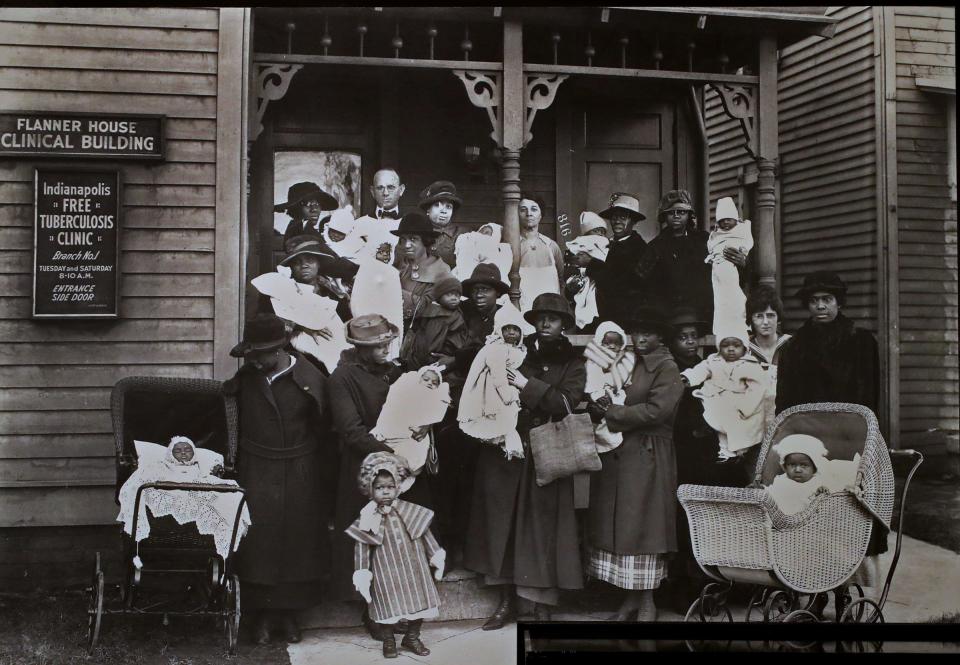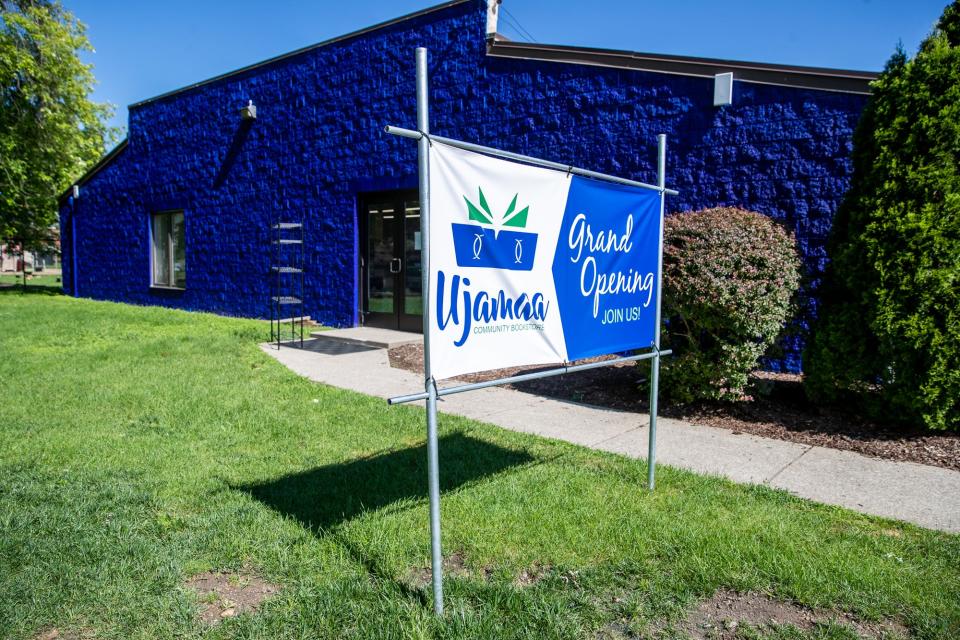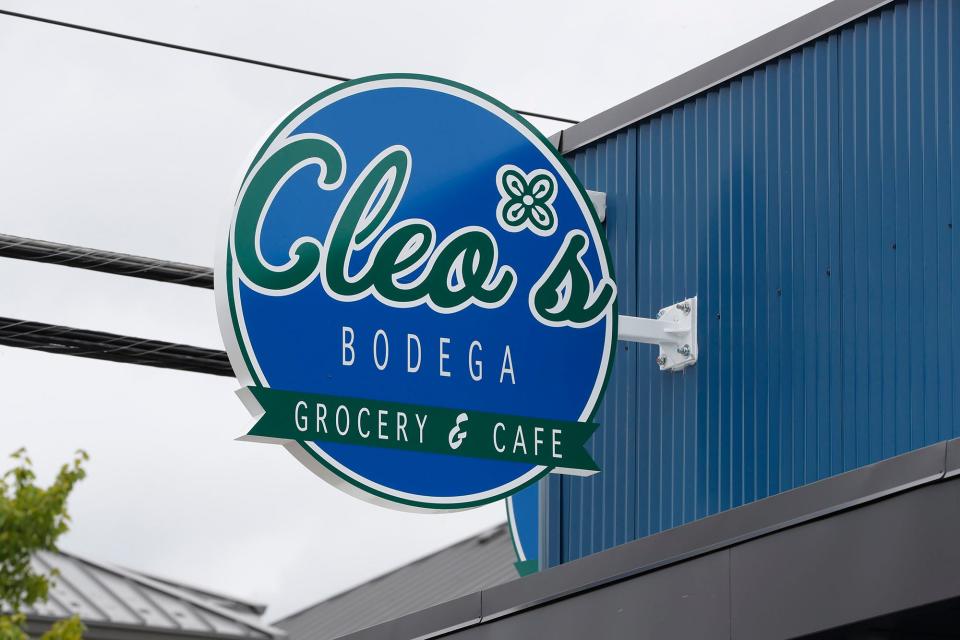Op/Ed: Cleo Blackburn's vision for Flanner House, Indy's Black residents continues today
Cleo Blackburn had an unusual giant presence in Indy social services in the 1940s and 1950s. The African American civic leader put Indy’s Flanner House on the national map in many ways now forgotten.
He took the settlement house from a small emergency station to major efforts in job training, home ownership, urban gardening, day care and sex education. He was not an advocate of integration with whites, yet he assembled a board of directors that included many of the city’s major business and civic leaders.
Much of his story has been forgotten, but the current Flanner House effort to revive urban gardening has been named in Dr. Blackburn’s honor — Cleo’s Bodega. The restaurant has a small grocery, including fresh fruit and vegetables from the kind of urban gardens similar to the ones launched by Cleo Blackburn in the 1940s.
More:This nonprofit director draws on his own pain to inspire neighborhood change
Another lasting impact from Blackburn’s life has been Flanner House Homes, which opened an ownership door to more than 300 African American families in the 1950s. Instead of a down payment, fathers put in 20 weekly hours of sweat equity on home construction around Attucks High School. The program helped overcome traditional bank discrimination against lending to African Americans and revealed a mortgage business opportunity that the large banks were missing.
At a practical level, former Methodist Hospital President Sam Odle remembers how his uncle and aunt, Ralph and Laura Sanders, could build and own their home through the program without qualifying as middle class at the time. “They were domestic workers,” he said. “They could not have owned a home otherwise. The sweat equity part was the only way they could accumulate enough money for the down payment. That allowed you to have immediate equity.”
Odle also recalls Flanner House as his home away from home at a young age, for after-school activities, along with summer camp at Happy Hollow south of Indianapolis.
Cleo Blackburn was the primary role model. “I remember him being very professional, articulate — like a father figure,” he said. “He was always very nice to us. He liked children. He didn’t come off as gruff. He would come in and have lunch where the little kids were. I can remember him talking to us. He had the demeanor of a minister.”
The Morgan Health Center was one of the city’s first community health clinics and what would be preventive health services today, along with a prenatal clinic, dental clinic, immunizations and X-rays.
'Greatest conductor of people'
Blackburn did not talk much about racial reconciliation, but the organization brought whites and African Americans together in an unusual way in an era of segregation. The board included a who’s who of Indy’s African American leadership, such as Mrs. Freeman Ransom, the widow of Madam Walker’s attorney; State Sen. Robert Brokenburr, the first African American state senator who authored the state’s 1949 school desegregation legislation; Lionel Artis, the manager of Lockfield Gardens and the Senate Avenue YMCA; and Dr. Frank Lloyd, who later would be the first Black president of Methodist Hospital.
The board also included Chamber of Commerce head Bill Book; top Ayres executive Bill Stout; civic leader Tom Binford; builder Gene Glick; and William Hudnut, then the pastor of Second Presbyterian Church before he became mayor. Board members would run interference for Flanner House with city government or the United Fund, the predecessor to United Way.
Flanner House seemed to be doing everything in the 1940s and 1950s — a combination of emergency social services, vocational education, home ownership, summer camp for children; after-school recreation. One of the most popular events was a track meet at the old CYO field on 16th Street, attracting 500 high school athletes some summers.

Board minutes don’t reflect much discussion of racial reconciliation or a crusade to help African Americans moving to Indy from the South in the great migration. But the minutes, stored in the Indiana Historical Society archives, suggest that relationships were being formed and trust was established, sometimes serving as a foundation for later civic ventures.
Binford, for example, was a key civic leader in the implementation of federal court-ordered desegregation of the Indianapolis Public Schools in the late 1970s and early 1980s. Hudnut brought a practical perspective from Flanner House board service to the poverty and race issues he faced in four terms as mayor, as he led the city from being “no-place” to major league stature.
“Your father is the greatest conductor of people,” Binford told Blackburn’s daughter, Sarah Kimbrough. “When the conductor stands in front of them, he brings people and their instruments together to make a solid program.”
Flanner House becomes model for world leaders
One result of the home ownership initiative was a stable neighborhood of owner-occupied homes around Attucks High School. Families were saving an estimated 40% of the costs through the sweat equity. The net worth of African American families boosted substantially through the project, which put Flanner House on the map nationally and internationally. Eleanor Roosevelt, widow of President Franklin Roosevelt, visited, along with political leaders from Africa and Europe. Visitors came from as far as the new nation of Pakistan, which was separated from India and received an influx of refugees after World War II. “Poverty was astronomically high in Pakistan then,” notes the current Flanner House executive director Brandon Cosby, walking a visitor through the photo gallery of the history of the organization. “A delegation from Pakistan was sent here to see an organization that specialized in moving people out of poverty.”

Mahalia Jackson performed at a concert for the Flanner House guild. Nat King Cole sang on another occasion. Harry Belafonte visited, performed and played ping pong with the children at Flanner House.
“Flanner House was the social hub of the Black community,” said Kimbrough. “Teenagers would have their parties there. The track and field program was there.”
Blackburn seemed to know people everywhere, and many would come to their home. “We’d have Christmas breakfast with Eli Lilly and we didn’t know who he was,” recalled Kimbrough. “He was just a friend of my father.”
Flanner House staff often moved on to larger ventures. Joseph Taylor, after directing Flanner House social services, became the first dean of the new liberal arts school at IUPUI. Osma Spurlock, another social services director, later held several prominent positions in city and state government.
Born in Mississippi, Blackburn attended Butler University as an undergraduate. For college his mother gave him Proverbs 3:6, a Bible verse, on a slip of paper, “In all thy ways acknowledge Him and He shall direct thy paths.” Earning his master’s degree at Fisk, Blackburn worked in Philadelphia, then became a research assistant at the Tuskegee Institute, researching the great migration of 2.5 million African Americans moving north. He was called to Flanner House in 1936.
More:A look inside Flanner House's Ujamaa Community Bookstore
The 1960s brought new challenges to Flanner House and Dr. Blackburn.
He was an older man by then, and a younger generation of African American leadership was emerging in the civil rights movement in Indianapolis and nationally. His gray hair and wisdom would earn the respect of some. Others, not realizing that they were standing on his generation’s shoulders, looked on him with some disdain. He wasn’t cool or hip.
Great Society programs from the federal government, such as Model Cities or Head Start, made Flanner House efforts seem less glamorous or old-fashioned. Cleo Blackburn and other board members warned that federal aid was not permanent and depended on the political winds in Washington. Younger African American leaders saw Dr. Blackburn as older and too reluctant to join the civil rights protests. Odle remembers him as dedicated to friendship with everyone. “He was more the lamb than the wolf. He would influence people by friendship and finding common ground.” His calling was to help people one family at a time. He retired in 1971, passing away in 1978.
Flanner House today
His successor 50 years later is Brandon Cosby, who grew up in New Castle as the youngest of eight children. Cosby looks back on Blackburn with admiration for his grasp of the priority of African American ownership of community assets, especially homes and businesses. “He never pushed on integration because that was not his goal,” Cosby said. “He was focused on building economically thriving neighborhoods and communities that were self-sufficient and self-reliant.”

Cosby aspires to reclaim that legacy of the city’s biggest 20th century effort to help African Americans moving North in the great migration from the South. “There’s a lot of history here,” he notes. “Of all the things we do, none of it is really new.” Farming was a part of the 1930s Flanner House, along with a canning effort and a credit union. Now Flanner House has a two-acre farm producing 50,000 pounds of produce to sell at the grocery — tomatoes, eggplant, squash, beans, along with apples and pears from 30 trees. The farm also offers some young people a chance to learn farming skills as well as a high school equivalency degree.
They keep the operation small in scale, helping it survive the recent pandemic months. “Your margins are so narrow in the grocery business, he said. “You don’t want to get so big that the overhead kills you.”
The Ujamaa Community Bookstore is the state’s only African American owned and operated bookstore, offering a marketplace for artists, designers and authors.
A mental health center, Morningstar, will open in October with full-time African American staff. “You shouldn’t have to leave your neighborhood to be able to heal,” Cosby notes.
A small home ownership initiative will expand with a grant from the African American Quality of Life Initiative, with the goal of getting ahead of potential gentrification, with plans to move 50 renting families to home ownership. A partnership with Lake City Bank offers ATM services as well as discounted monthly mortgage program to help expand home ownership in the area.
In terms of history, what is still needed is a solid biography of Cleo Blackburn, similar to the book written about Madam Walker, “Madam C.J. Walker’s Gospel of Giving” by Tyrone McKinley Freeman. He was the Booker T. Washington of Indianapolis. Cosby thinks he was overlooked in city history because Blackburn did not jump on the popular bandwagon of the 1960s.
“He wasn’t about pushing into white spaces,” Cosby said. “For him it was about ownership and control. If you didn’t own it, you didn’t control it. Then you had no power in that space. Some people would say it was a conflict between W.E.B. Dubois and Booker T. Washington. But that’s a false dilemma. It’s two sides of the same coin. Both were advocates for the betterment of the Black quality of life.”
He also did not seek credit for himself. “He was the most humble man you would ever see and quiet and unassuming,” said his daughter, Kimbrough. “When Eleanor Roosevelt came to town she came to breakfast at our house,” she recalls. “They never told us who she was. It was just something we were doing with daddy.”
Russ Pulliam is associate editor of The Star. Email him at Russell.Pulliam@indystar.com.
This article originally appeared on Indianapolis Star: Flanner House former director laid solid foundation for Indy nonprofit

